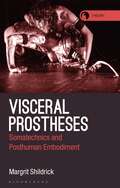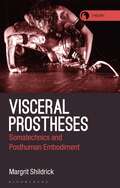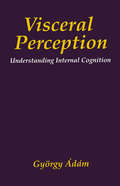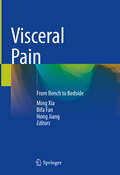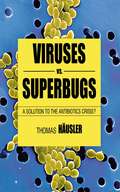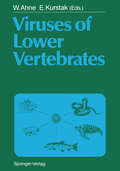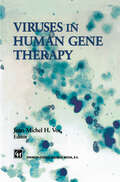- Table View
- List View
Viscoelastics in Ophthalmic Surgery
by H.B. Dick Oliver SchwennIt will be difficult to find an ophthalmic surgeon who will gladly do his work entirely without viscoelastics. Within just a few years this group of substances has enlarged the field of ophthalmic surgery enormously. Many procedures have be come safer and simpler and other techniques could only be developed because of the availability of visco elastics. Especially cataract surgery and implantation of intraocular lenses have benefitted. Implantation of an intraocular lens can be per formed much more reliably into the capsular bag without endangering the posterior capsule. Implantation of foldable lenses would be almost impossible without visco elastics. However, other surgical maneuvers also necessitate visco elastics, especially when the anterior chamber must be maintained, the corneal endothelium must be protected and delicate tissues must be manipulated. A cor neal transplant can be sutured safely into the recipient corneal ring using visco elastics. Even in glaucoma surgery, visco elastics gain importance as they are being used in trabeculectomy or in deep sclerectomy with additional viscocana lostomy. But which substance is best for which purpose? Just as much as a basic phar macological knowledge is necessary for a rational use of drugs, in-depth know ledge of physicochemical properties and objective investigations are prerequi sites for a logical selection of visco elastics from an ever increasing number of available substances. H.
Viscoelastic Substances
O. HOCKWIN Just as Professor Hoffmann, the Chairman of the symposium on "Vis coelastic Substances", I should like to bid all participants a cordial wel come and thank you for your support in coming here. I should like to emphasize that it is your presence that is one of the most important pre requisites of this symposium, namely to form an expert forum in which clinical and experimental ophthalmology, the pharmaceutical industry and the authorities concerned with health and drugs from various states are represented. The subject matter can be dealt with from various points of view. I sincerely hope that everyone will make full use of this opportu nity of exchanging expert opinions. There will be an excellent chance of doing so in particular in the round-table conversation after lunch. I especially wish to thank all lecturers for their willingness to present the facts arising from their comprehensive knowledge and great experi ence which, after all, are necessary in respect of the classification of vis coelastic substances as therapeuticals on the one hand or medical devices on the other, and also to present these with expertise and to advise on the matter and to furnish a concluding commentary or recommendations. On the basis of examples of use in ophthalmology on which we will be informed in the morning session, we must firstly pay increased atten tion to the properties of the viscoelastic substances.
Visceral Vessels and Aortic Repair: Challenges and Difficult Cases
by Yamume Tshomba Domenico Baccellieri Roberto ChiesaThis book shows how new technologies and technical skills together with deeper understanding of pathophysiology of visceral and renal ischemia have contributed to significant improvements in the clinical outcomes in patients undergoing complex aortic repair involving splanchnic arteries. In recent years, aortic repair has expanded its borders, focusing more and more on the particularly challenging segments from which critical branches originate. Optimal results in this area are obtained through a multidisciplinary approach based on crucial elements such as sophisticated imaging techniques, advanced anesthesiological and pharmacological strategies, as well as updated surgical techniques and devices able to reduce ischemic injuries. The book presents problems tackled from different perspectives, by analyzing the main technical aspects of the surgical technique but also functional and metabolic issues. It also discusses concepts such as ischemic preconditioning and ischemia-reperfusion mechanisms, as well as innovative investigational approaches. In the “endovascular era”, it highlights the most recent updates in complex endovascular repair involving renal and visceral arteries, providing both practical tips and tricks and outcomes analyses. The volume also addresses specific, rarely reported problems in vascular surgery, including issues in renal transplant, oncologic surgery with involvement of splanchnic arteries and of the vena cava, and use of the deep veins in aortic surgery. This volume represents a powerful tool for both young and experienced operators who wish to approach the complex aortic pathology either by open surgery or through endovascular methods.”
Visceral Vascular Manipulations E-Book
by Jean-Pierre Barral Alain CroibierThis work demonstrates a novel approach to visceral osteopathy. Basing their ideas on a sound understanding of the underlying A&P, Jean-Pierre Barral and Alain Croibier propose manipulation of the arteries to treat the intestines and other internal organs by increasing their blood flow. The arteries, elastic and muscular in structure, and the innumerable nerve filaments which surround them, react ideally to manual treatment. Rich in detailed, high quality illustrations, this book serves as both an anatomical reference and a guide to carrying out visceral vascular manipulations in the most effective way possible and is suitable for osteopathic physicians, osteopaths, chiropractors, physical therapists, manual therapists, physiotherapists, and massage therapists worldwide.Offers practical and clinically relevant information to all practitioners and therapists working in the field Abundant use of pull-out boxes, line artwork, photographs and tables facilitates ease of understanding Prepared by experts of international renown Covers treatment of the main organs including the heart, pancreas, small intestine, colon and other abdominal structures as well as the regions of the neck, skull and pelvic cavity Serves as both an anatomical reference and a guide to carrying out visceral vascular manipulations in the most effective way possible Suitable for osteopathic physicians and osteopaths, chiropractors, physical therapists, manual therapists, physiotherapists, and massage therapists
Visceral Sensory Neuroscience: Interoception
by Oliver G. CameronIt has been known for over a century that there is an afferent(body-to-brain), as well as an efferent(brain-to-body), component to the visceral-atonomic nervous system. Despite the fundamental importance of bodily afferent information- sometimes called interoception- to central nervous system control of visceral organ function, emotional-motivational processes, and dysfunction of these processes, including psychosomatic disorders, its role did not receive much attention until quite recently. This is the first comprehensive review of this topic and it covers both neurobiological and psychobiological aspects. The author first defines the issue and gives an historical background starting with the James-Lange theory of emotion, and addresses learning and motivation, roots in Pavlovian conditioning research, and operant conditioning of visceral function. In the second section he reviews recent scientific findings in the neural basis of visceral perception and studies in cardiovascular-respiratory and alimentary interoception. Finally, he discusses several related areas of research and theory including drug state issues, interoception and psychiatric disorders, and bodily consciousness, and suggests directions for future investigation. The book will be of interest to scientists in neurobiology, psychology, and brain imaging, to indivuals in related clinical fields such as psychiatry, neurology, cardiology, gastroenterology, and clinical psychology, and to their students and trainees.
Visceral Prostheses: Somatechnics and Posthuman Embodiment (Theory in the New Humanities)
by Margrit ShildrickIn the postmodern era, when the interface of bodies, biologies and technologies increasingly challenges the very notion of what counts as human, Margrit Shildrick proposes new understandings of the limits and possible extensions of posthuman embodiment. Focusing on prostheses, Shildrick broadens our understanding of both what prostheses are and what they might mean for human embodiment. As well as rehabilitation devices used by disabled people to replace or augment impaired parts of the body, Shildrick introduces visceral organic prostheses, which involve any cellular material that cannot be identified with the self, from organ transplantation to the physiological processes of microchimerism and the microbiome. Beyond origin narratives that concentrate on 'host' and 'guest' and 'self' and 'other', she examines the transformative possibilities that prostheses offer as they extend the nature of the embodied self beyond genetic singularity. Building on cutting-edge interdisciplinary research in critical disability studies, transplantation studies, and bioscience, Visceral Prostheses argues that bodies with prostheses in whatever form should no longer be understood as irregular forms of normative embodiment, but as limit cases of a common experience. In doing so, it challenges the western understanding of the singular self and welcomes a new understanding of the human.
Visceral Prostheses: Somatechnics and Posthuman Embodiment (Theory in the New Humanities)
by Margrit ShildrickIn the postmodern era, when the interface of bodies, biologies and technologies increasingly challenges the very notion of what counts as human, Margrit Shildrick proposes new understandings of the limits and possible extensions of posthuman embodiment. Focusing on prostheses, Shildrick broadens our understanding of both what prostheses are and what they might mean for human embodiment. As well as rehabilitation devices used by disabled people to replace or augment impaired parts of the body, Shildrick introduces visceral organic prostheses, which involve any cellular material that cannot be identified with the self, from organ transplantation to the physiological processes of microchimerism and the microbiome. Beyond origin narratives that concentrate on 'host' and 'guest' and 'self' and 'other', she examines the transformative possibilities that prostheses offer as they extend the nature of the embodied self beyond genetic singularity. Building on cutting-edge interdisciplinary research in critical disability studies, transplantation studies, and bioscience, Visceral Prostheses argues that bodies with prostheses in whatever form should no longer be understood as irregular forms of normative embodiment, but as limit cases of a common experience. In doing so, it challenges the western understanding of the singular self and welcomes a new understanding of the human.
Visceral Perception: Understanding Internal Cognition (The Springer Series in Behavioral Psychophysiology and Medicine)
by Gyorgy ÁdámAuthor Gyorgy Adam maintains there is a type of sensory system active within the internal organs that appears to be, in some measure, independent of the traditional senses. Variously termed viscerosensory perception, internal perception, or internal cognition, this system operates largely outside of consciousness. Adam employs the extensive data he has gathered over many years to demonstrate how "hidden" internal signals originating in the alimentary tract, the cardiovascular system, and the kidneys may influence emotional states. Visceral Perception is the only comprehensive treatment of this elusive subject.
Visceral Pain
by Stuart M. Brierley Nick J. SpencerThe chapters in this book are based on the Visceral Pain conference in Adelaide, Australia, under the auspices of the International Federation for Neurogastroenterology and Motility in 2021. This is one of the hottest fields of science and includes mechanisms involving how the microbiome communicates with the brain and how, when disordered, these mechanisms contribute to clinical diseases such as Irritable Bowel Syndrome and Inflammatory Bowel Disease. Researchers from around the globe presented their latest findings as a review of the current state of the art in the field from both the clinical and scientific points of view. These systems are now appreciated as being critical for shaping our well-being and their disorders underlie chronic clinical conditions of significant morbidity and mortality. The author team includes long-established authorities who significantly contributed to the advances in visceral pain research over the past two decades and the new generation that will continue to contribute to advancing our understanding of the field.
Visceral Pain: From Bench to Bedside
by Hong Jiang Ming Xia Bifa FanPatients with chronic visceral pain present a challenge for medical providers because of their vague presenting symptoms and frequent lack of identifiable pathology. Despite this, chronic visceral pain can be a debilitating medical condition that increases morbidity and decreases quality of life; the long-term consequences of which cause significant socioeconomic burden and debility. Covering the newest trends, studies, diagnosis and treatments in visceral pain care, as well as the pain treatment strategies that have been successfully employed in the past, this book brings readers fully up to date with effective recognitions and treatments for visceral pain. The clinical evaluation and presentation of common chronic visceral pain conditions and multimodal treatment options that can be used to assist patients and providers are focused.
Virussicherheit von Blut, Plasma und Plasmapräparaten
by Günther MaassIn diesem Buch werden die verschiedenen Viren (Hepatitis-B-Virus, Hepatitis-Non-A-Non-B-Viren, Cytomegalievirus, Epstein-Barr-Virus, Papovaviren, HIV), die Blut, Plasma und Plasmapräparate kontaminieren können, besprochen. Es werden die Nachweisverfahren dieser verschiedenen Viren und Methoden zu ihrer Beseitigung in den angegebenen Präparaten dargestellt. Außerdem werden die Anforderungen diskutiert, die das Arzneimittelgesetz an den Hersteller und an den Anwender dieser Produkte hinsichtlich der Wirksamkeit und Unschädlichkeit stellt. Das Thema hat durch die Übertragung von HIV durch Blut oder Blutprodukte in den vergangenen Jahren enorm an Bedeutung gewonnen.
Viruskrankheiten des Menschen: unter besonderer Berücksichtigung der experimentellen Forschungsergebnisse
by Eugen HaagenViruskrankheiten des Menschen: unter besonderer Berücksichtigung der experimentellen Forschungsergebnisse
by Eugen HaagenDas vorliegende Werk iot das erste deutsche Handbuch der Viruskrankheiten des Menschen, das seit nunmehr 25 Jahren erscheint und den Anspruch erheben kann, als solches betrachtet zu werden. Es ist als }>Ein-Mann-Buch« geschrieben worden, da die Erfahrungen früherer Werke ähnlicher Art gezeigt haben, daß ein von mehreren Autoren verfaßtes Buch zwar vielseitiger in Inhalt und Auffassung und deswegen vielleicht auch interessanter zu sein pflegt, aber doch den großen Nachteil hat - besonders wenn es sich um sehr große ineinander übergreifende Forschungsgebiete handelt -, verhältnis mäßig wenig einheitlich und auch sehr verschieden erschöpfend in der Ausführung der einzelnen Kapitel zu sein. In dem vergangenen Vierteljahrhundert haben die experimentelle Virusforschung sowie die Kenntnisse der durch Viren hervorgerufenen Krankheiten einen solchen Auf schwung erfahren, daß man heute geradezu von einer selbständigen Wissenschaft, der Virologie, sprechen kann. Es gibt heute auch keine andere Gruppe von Krankheits erregern, die in so vieler Hinsicht eine in sich geschlossene Einheit bilden, aber auch eine so große Rolle in der menschlichen Pathologie spielen, wie die Virusgruppe. Dieses Werk erhebt nicht den Anspruch auf besondere Originalität; eine solche ist sogar möglichst vermieden worden. Vielfach sind die Darstellungen der Autoren auch referierend und ihrem eigenen Text entsprechend wiedergegeben, um deren Auffassung möglichst getreu zu vermitteln.
Viruses Vs. Superbugs: A Solution to the Antibiotics Crisis? (Macmillan Science)
by T. Häusler Thomas HäuslerEach year thousands of people die from bacteria resistant to antibiotics. Alternative drugs are urgently needed. A surprising ray of hope from the past are viruses that kill bacteria, but not us. Award-winning science journalist Thomas Häusler investigates how these long-forgotten cures may help sick people today.
Viruses, Plagues, and History: Past, Present, and Future
by Michael B. OldstoneMore people were killed by smallpox during the twentieth century--over 300 million--than by all of the wars of that period combined. In 1918 and 1919, influenza virus claimed over 50 million lives. A century later, influenza is poised to return, ongoing plagues of HIV/AIDS and hepatitis infect millions, and Ebola, Zika, and West Nile viruses cause new concern and panic. The overlapping histories of humans and viruses are ancient. Earliest cities became both the cradle of civilization and breeding grounds for the first viral epidemics. This overlap is the focus of virologist/immunologist Michael Oldstone in Viruses, Plagues and History. Oldstone explains principles of viruses and epidemics while recounting stories of viruses and their impact on human history. This fully updated second edition includes engrossing new chapters on hepatitis, Zika, and contemporary threats such as the possible return of a catastrophic influenza, and the impact of fear of autism on vaccination efforts. This is a fascinating panorama of humankind's longstanding conflict with unseen viral enemies, both human successes--such as control of poliomyelitis, measles, smallpox and yellow fever, and continued dangers--such as HIV and Ebola. Impeccably researched and accessibly written, Viruses, Plagues and History will fascinate all with an interest in how viral illnesses alter the course of human history.
Viruses, Plagues, and History: Past, Present, and Future
by Michael B. OldstoneMore people were killed by smallpox during the twentieth century--over 300 million--than by all of the wars of that period combined. In 1918 and 1919, influenza virus claimed over 50 million lives. A century later, influenza is poised to return, ongoing plagues of HIV/AIDS and hepatitis infect millions, and Ebola, Zika, and West Nile viruses cause new concern and panic. The overlapping histories of humans and viruses are ancient. Earliest cities became both the cradle of civilization and breeding grounds for the first viral epidemics. This overlap is the focus of virologist/immunologist Michael Oldstone in Viruses, Plagues and History. Oldstone explains principles of viruses and epidemics while recounting stories of viruses and their impact on human history. This fully updated second edition includes engrossing new chapters on hepatitis, Zika, and contemporary threats such as the possible return of a catastrophic influenza, and the impact of fear of autism on vaccination efforts. This is a fascinating panorama of humankind's longstanding conflict with unseen viral enemies, both human successes--such as control of poliomyelitis, measles, smallpox and yellow fever, and continued dangers--such as HIV and Ebola. Impeccably researched and accessibly written, Viruses, Plagues and History will fascinate all with an interest in how viral illnesses alter the course of human history.
Viruses of Lower Vertebrates
by Winfried Ahne Edouard KurstakAttention to viral infections and pathology previously focussed on diseases of economically important fish. In recent years, however, much new information on molecular virology and oncogenicity derives from viruses occurring in amphibians. New insights into the field of zoonosis were gained by studies of lower vertebrates serving as intermediate hosts in multiple human infections. Certain viruses, e.g. the influenza virus or calicivirus, seem capable of bridging species lines and even the land - sea interface. Global developments in aquaculture are indicated in influenza pandemics. These proceedings present research findings on viruses of fish, amphibians and reptiles, including defence mechanisms, zoonoses, evolutionary considerations and diagnostic approaches.
Viruses: Intimate Invaders
by Van G. WilsonThis book guides through the fascinating world of viruses and makes readers enjoy science in an accessible way. Virologist and author Professor Van Wilson imparts knowledge about what viruses are, how they work, and how much they impact life on Earth. The book equips the reader with the scientific basics behind virus function and presents the historic milestones of virus research and discovery. Well-known viruses such as HIV or Influenza are tackled alongside novel pathogens like coronavirus SARS-CoV-2. Professor Wilson explores where they come from and how they impact our society. Last but not least the book provides exciting insights into how our immune system reacts to different viruses and how vaccines contribute to conquer pandemics. While scientifically informative, this book makes the field of virology understandable to a lay audience and encourages readers to further thinking. And more importantly, it conveys the wonder, beauty, and mystery of these ubiquitous, microscopic marvels. This book addresses anyone interested in understanding the principles of virology, viral diseases, or the impact of viruses on human societies.
Viruses in Human Gene Therapy
by J. VosW. French Anderson, M.D. The publication of this book comes at an opportune time for the young field of human gene therapy. After a decade of long struggle at the laboratory bench and many long hours under the harsh lights of the federal review process, gene therapy has emerged as a legitimate scientific discipline. It is now time to move away from the period of questioning whether gene therapy will be a useful part of the physician armamentarium to begin to actively teach the concepts and practices that make gene therapy a reality. This book is a comprehensive collection of chapters that describe the basic biology and potential application of viruses as gene transfer reagents. It is not a coincidence that a modified virus was the reagent used in the first human gene therapy trials. Viruses have evolved with the human species (and most likely with all forms of life) to be the masters of gene transfer.
Viruses in Foods (Food Microbiology and Food Safety)
by Sagar M. Goyal Jennifer L. CannonFoodborne viruses are an important group of pathogens recognized to cause significant disease globally, in terms of both number of illnesses and severity of disease. Contamination of foods by enteric viruses, such as human norovirus and hepatitis A and E viruses, is a major concern to public health and food safety. Food Virology is a burgeoning field of emphasis for scientific research. Many developments in foodborne virus detection, prevention and control have been made in recent years and are the basis of this publication. This second edition of Viruses in Foods provides an up-to-date description of foodborne viruses of public health importance, including their epidemiology and methods for detection, prevention and control. It uniquely includes case reports of past outbreaks with implications for better control of future outbreaks, a section that can be considered a handbook for foodborne virus detection, and updated and expanded information on virus prevention and control, with chapters on natural virucidal compounds in foods and risk assessment of foodborne viruses.
Viruses in all Dimensions: How an Information Code Controls Viruses, Software and Microorganisms
by Rafael BallMicroorganisms, viruses, and computer programs encode all the information necessary to reproduce and spread themselves. Yet these mechanisms are amazingly similar in the animate world, in the world of viruses, and even in the world of technical systems. The book shows how great the parallels are between these various animate and inanimate replicating systems and what they are based on.The excursion also leads into the fascinating world of genetics, to the question of what defines life and into the programming of software that multiplies itself independently. Finally, the question is derived whether and to what extent such self-replicating technical systems can become as dangerous as infectious viruses in triggering pandemics, such as the Corona pandemic in 2020.
Viruses, Immunity, and Mental Disorders
by Edouard Kurstak Z.J. Lipowski P.V. MorozovIn spite of progress in biomedical research, we know little about the causes, prevention, and treatment of the numerous mental and neurological disorders that afflict up to 15% of all individuals. In the last decade, great advances have been made in the physiopathology of mental and neurological disorders, leading to at least a partial control of Parkinson's disease, epilepsy, certain psychoses, and anxiety syndromes. Despite the fact that an underlying specific neurotransmitter deficiency has been demonstrated in Alzheimer's and Parkinson's diseases, the immune dysfunction and viral hypotheses continue to be attractive for investigators dealing with these degenerative diseases of the aging brain, which afflict 10% of senior citizens. A retrospective epidemiologic study suggests that the encephalitis lethargica and parkinsonism were almost certainly caused by the 1918 influenza virus pandemics. It must be stressed that the etiopathogenesis of many mental disorders is not known, and this ignorance has led to several untenable neurophysiological and biochemical hypotheses. Epidemiologic investigations show a high prevalence of functional psychoses and organic mental disorders. Although many of them are conceptualized as biopsychosocial disorders, recent data indicate that the biological component appears more and more as a major etiologic factor. Among the various biological hypotheses, the viral and im munologic concept has become a significant one. In view of recent discoveries in virology and immunity, it becomes clear that viral and immunologic hypotheses should be inves tigated more systematically concerning the mechanisms of numerous mental and neu rological disorders.
Viruses, Immunity, and Immunodeficiency (University of South Florida International Biomedical Symposia Series)
by Andor Szentivanyi Herman FriedmanThis publication, "Viruses, Immunity and Immunodeficiency," is based on the first symposium in a series of International Biomedical Symposia sponsored by the College of Medicine of the University of South Florida in Tampa, Florida. There is an explosive interest concerning the effects of viruses on the immune response, especially the immunosuppressive effects of viral infection. This has come about because of the recognition that the Acquired Immunodeficiency Syndrome, which has taken biomedical scientists and the public in general by surprise, is just one of the many examples that viruses can influence the immune response system and, under appropriate circumstances, alter immunity in such a way that an infected individual becomes hi~lly susceptible to a variety of other organisms to which normal individuals would be resistant. This symposium series, sponsored by the University of South Florida College of Medicine, brings to the biomedical con®unity topics of current interest. We thank the members of the faculty of various departments of the College of Medicine and the administration of the College for their support and encouragement in having these symposiaat this medical school. This volume, based or. this symposium onviruses and immunity is a good exam ple of the interdisciplinary nature of modern irrJ!1I1nobiology and modern biomedical science in general. Many investigators with many different back grounds and training experiences, including microbiologists, immunologists, biochemists, oncologists, and physicians, are interested in how and why viruses influence the immune response system.
Viruses, Genes, and Cancer (Current Topics in Microbiology and Immunology #407)
by Eric Hunter Klaus BisterThis volume focuses on virus-host cell interactions, cellular genes acquired or modulated by viruses, the pathological effects of these interactions, and therapeutic interventions. Several chapters specifically address the role of viruses and genes – such as oncogenes, proto-oncogenes, or tumor suppressor genes – in the etiology of human cancer. Oncogenic signaling by PI3 kinase, mTOR, Akt, or the major cancer drivers MYC and RAF, and the role of tumor suppressors like p53, are discussed in detail. The volume also explores the emerging role of noncoding RNAs such as microRNAs in tumorigenesis and cancer therapeutics, and offers new insights into the role of HIV-host interactions relevant to pathogenesis and treatment. Gathering contributions written by leading scientists in their respective fields, the volume offers a valuable resource for researchers and clinicians alike.
Viruses: Essential Agents of Life
by Günther WitzanyA renaissance of virus research is taking centre stage in biology. Empirical data from the last decade indicate the important roles of viruses, both in the evolution of all life and as symbionts of host organisms. There is increasing evidence that all cellular life is colonized by exogenous and/or endogenous viruses in a non-lytic but persistent lifestyle. Viruses and viral parts form the most numerous genetic matter on this planet.





